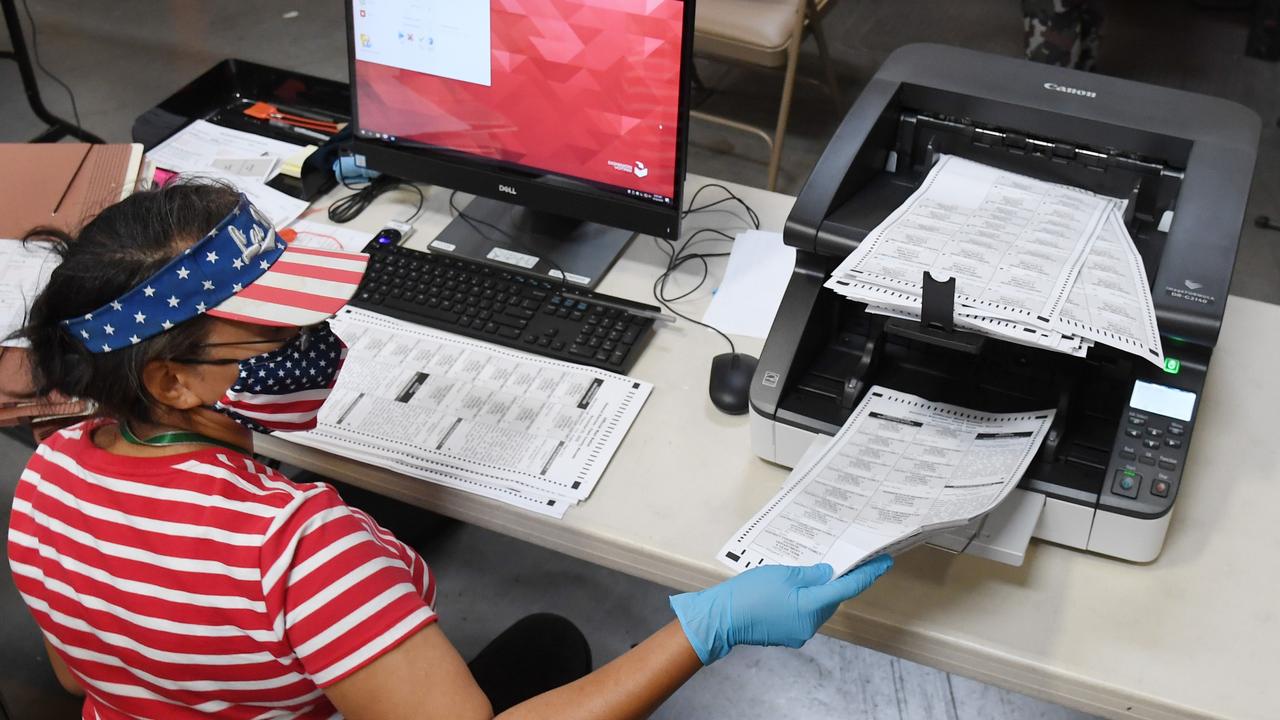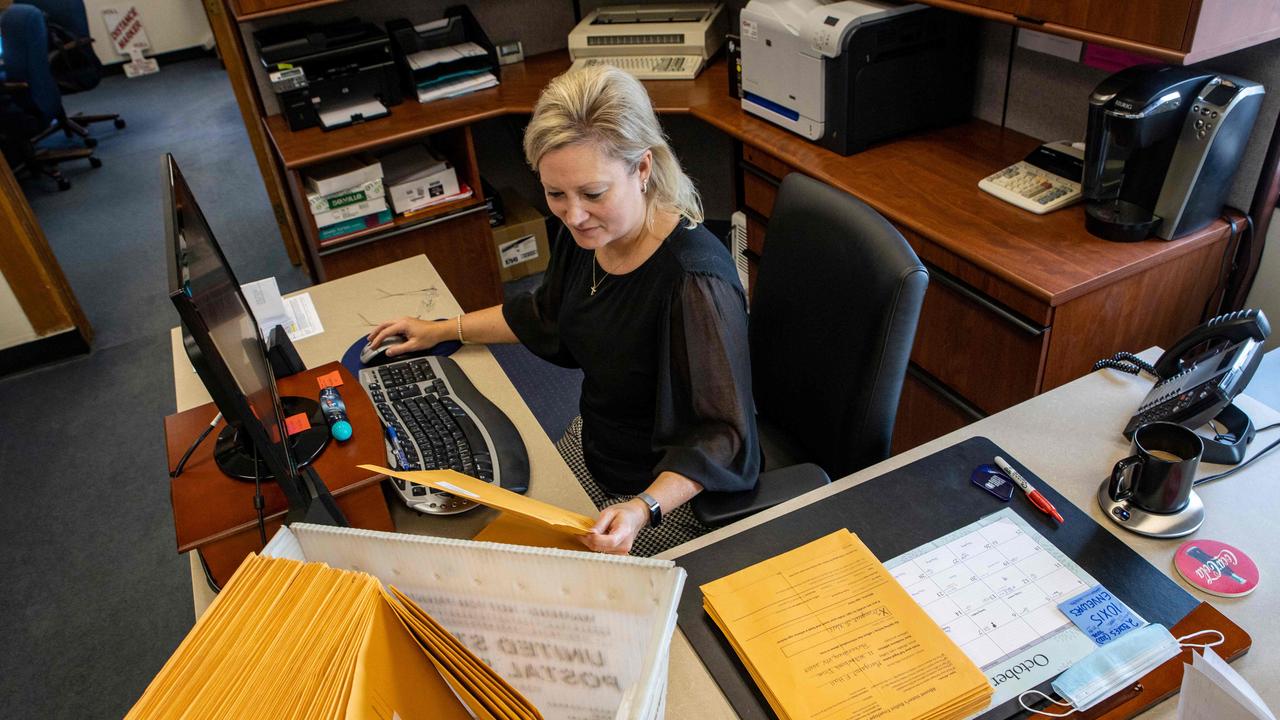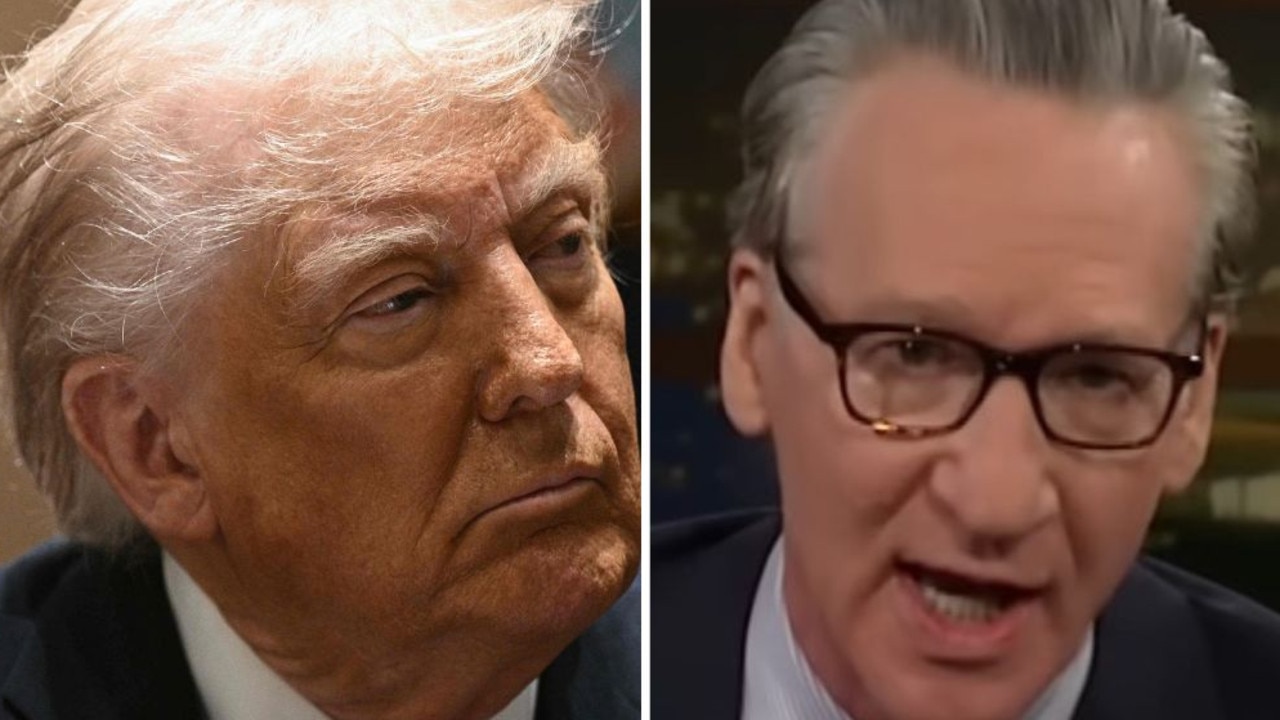How does mail-in voting work in the United States?
If Donald Trump gets his way, countless votes could be thrown out – and it could plunge the nation into a brand new “constitutional crisis”.

President Donald Trump has vowed to head to the Supreme Court in a shock bid to stop postal votes being counted.
During his stunning election night speech, Mr Trump falsely claimed to have already won the election, and described the ongoing postal vote situation as a “fraud on the American public”.
“This is an embarrassment to our country. We were getting ready to win this election. Frankly, we did win this election,” he said.
“So our goal now is to ensure the integrity for the good of this nation, this is a very big moment, this is a major fraud on our nation.
“We want the law to be used in a proper manner. So we’ll be going to the US Supreme Court. We want all voting to stop. We don’t want them to find any ballots at 4 o’clock in the morning and add them to the list, OK?”
But as political experts have pointed out – including Pod Save America co-host and former Obama advisor Dan Pfeiffer – this is not exactly democracy in action.
It's worth remembering that the reason the vote counting is taking so long is that in many of these states the Republicans blocked laws that would have allowed the counting to start earlier
— Dan Pfeiffer (@danpfeiffer) November 4, 2020
The ABC’s Washington bureau chief David Lipson said Mr Trump’s inflammatory speech and Supreme Court threat could cause a “constitutional crisis”, while longtime Republican Party election lawyer Benjamin Ginsberg told CNN the move was likely illegal.
“These are all legally cast votes. The process of trying to toss them out for some reason would just be viewed by any court, including the Supreme Court, as a massive disenfranchisement,” he said.
“I think you have to let all the votes be counted and watch it very carefully. And if you have objections to particular ballots, or to the process, then you have remedies after the fact.
“These are legally cast ballots … For a president to say we’re going to disenfranchise those legally cast ballots really is extraordinary.
“What the president said tonight is not only unprecedented, and not only lacks any basis in the law, it really is a disservice to anyone who was on the ballot today.”
US elections were easier before the coronavirus crisis, when most people voted in polling stations and their choices were automatically tallied by machine.
This year, because of the COVID-19 pandemic, voting by mail is soaring, posing manpower, technical and legal challenges across thousands of election jurisdictions, each with its own procedures and rules.
If the November 3 election between President Donald Trump and Joe Biden is close, many expect legal battles that, like in 2000, could go to the Supreme Court.
Polls show that far more Democrats than Republicans are likely to vote by mail, and Mr Trump’s Republican party has launched scores of legal fights that aim to limit postal voting.
In recent elections around one per cent of mailed ballots were rejected, and that figure is expected to rise with the surge of mail-in votes.
It could mean hundreds of thousands of disputed votes. The 2000 election was decided by a mere 537 vote difference in Florida.
WHAT’S THE OVERALL VOTE PICTURE?
In 2016 about 139 million Americans voted, 33 million of them by mail.
This year researchers project turnout could top 150 million, with possibly half of it mail-in votes.

HOW DOES MAIL-IN VOTING WORK?
Nine states and Washington, DC automatically send mail-in ballots to all voters.
In other states, voters have had to request them. In the past this was restricted to “absentee” voters, but this year many states – though not all – made it possible for anyone to get an absentee or mail-in ballot.
Some states including California and Nevada have only instituted universal mail-in voting this year.
In some instances, inaccurate or out-of-date voter lists have resulted in ballots being mailed to the wrong address, or to people who have died, sparking concerns those ballots could be fraudulently used.
Each state has its own rules. Most require the voter to fill out the ballot, put it in a return envelope, sign the outer envelope and mail the vote back, or drop it in designated drop boxes.
But some states include a privacy sleeve, which the ballot first goes into, before placing it in the envelope.
Some states require a voter to have witnesses also sign the outer envelope and provide their contacts. In Alabama, which has some of the most restrictive voting laws, the voter needs two witness signatures.
WHEN ARE BALLOTS COUNTED?
In-person votes are tabulated automatically, and in most cases are ready to announce within hours or even minutes of polls closing. But mailed ballots involve a laborious process and each state again has its own rules.
Some states will only count mailed ballots that arrive by election day – others will accept them up to 10 days later if they are postmarked by election day.
Because of the burden on the Postal Service, some states have lengthened the period they will accept ballots.
The process for verifying signatures, opening envelopes, and removing and then counting the ballots differs from state to state.
In Colorado, for example, ballots are opened on receipt. Counting – handled by machine – begins 15 days before the election, but data cannot be revealed until 7pm on election day.

BOTTLENECKS GALORE
One bottleneck is the Postal Service, which has seen cuts that some see as Republican attempts to hamper the mail-in vote.
On the other hand, according to its most recent annual report, the Postal Service delivers about 471 million pieces of mail every day – so it should be reasonably able to handle the additional load.
Given the volume of mailed votes, it take days to count them all.
Another bottleneck is signature verification. In some states, this is an automated process, but in others it is done manually, by poll workers visually matching signatures with what the state has on file.
Many people’s signatures change over time, and some have more than one way of signing. Younger people who grew up digitally, especially first-time voters, might not even have a regular signature, or not have one on file.
For ballots that are rejected, some states try to track down the voter and get them to confirm their signature, or “cure” the ballot. But this takes time.
After court battles lasting for months, a North Carolina appeals court ruled in October that voters will be given a chance to fix their ballots.
Another hurdle – should a ballot be thrown out if the voter doesn’t use the privacy sleeve?
In Pennsylvania following a Republican lawsuit, a court has ruled that “naked ballots”, which could be in the tens of thousands, cannot be counted. But other states accept them.
HERE COME THE LAWYERS
In the battleground states, both parties have revved up their legal teams. Trump has already said he doesn’t trust mailed-in ballots that are received by counters after election day.
The Stanford-MIT Healthy elections Project counted more than 300 lawsuits in 44 states.
As in Florida in 2000, a close battle will generate calls for multiple recounts, with both sides arguing over the validity of every single ballot. Is the postmark correct? Is the signature correct? Is the address exactly right? Can it legally be cured? Is it too late?



